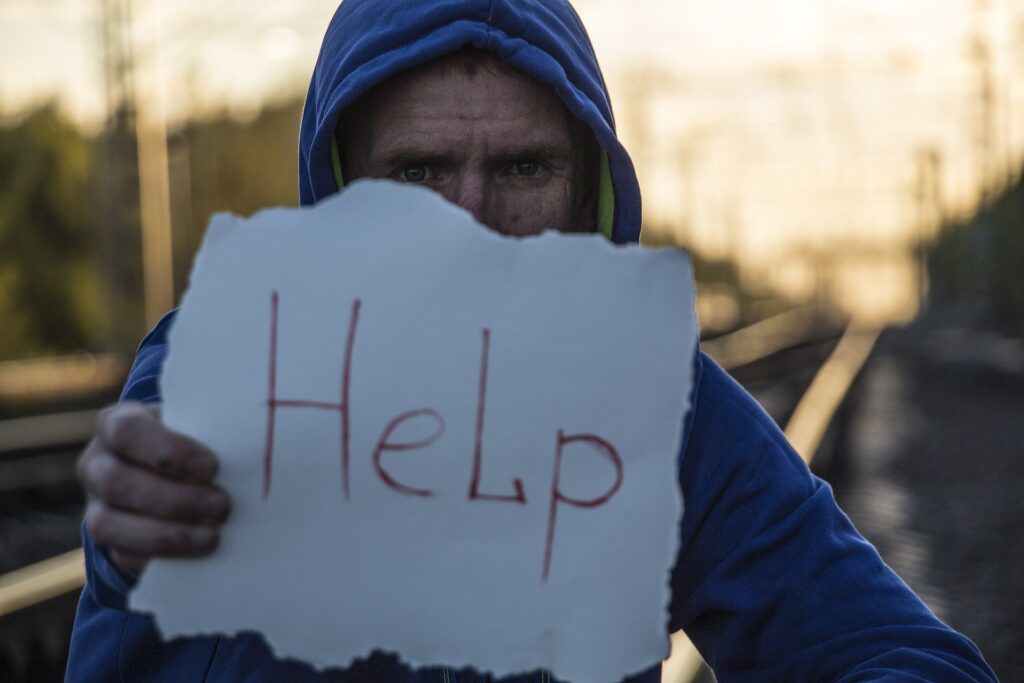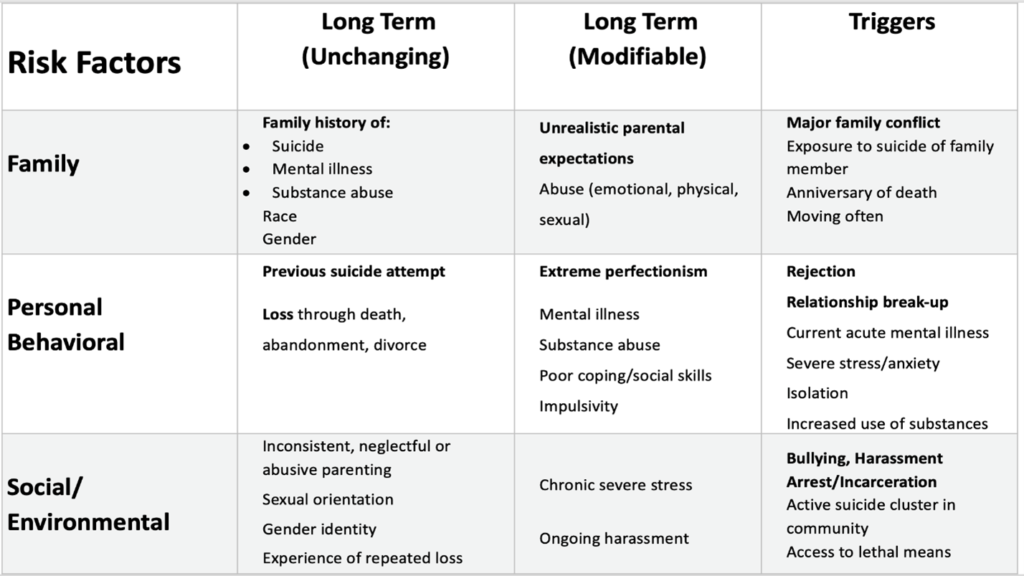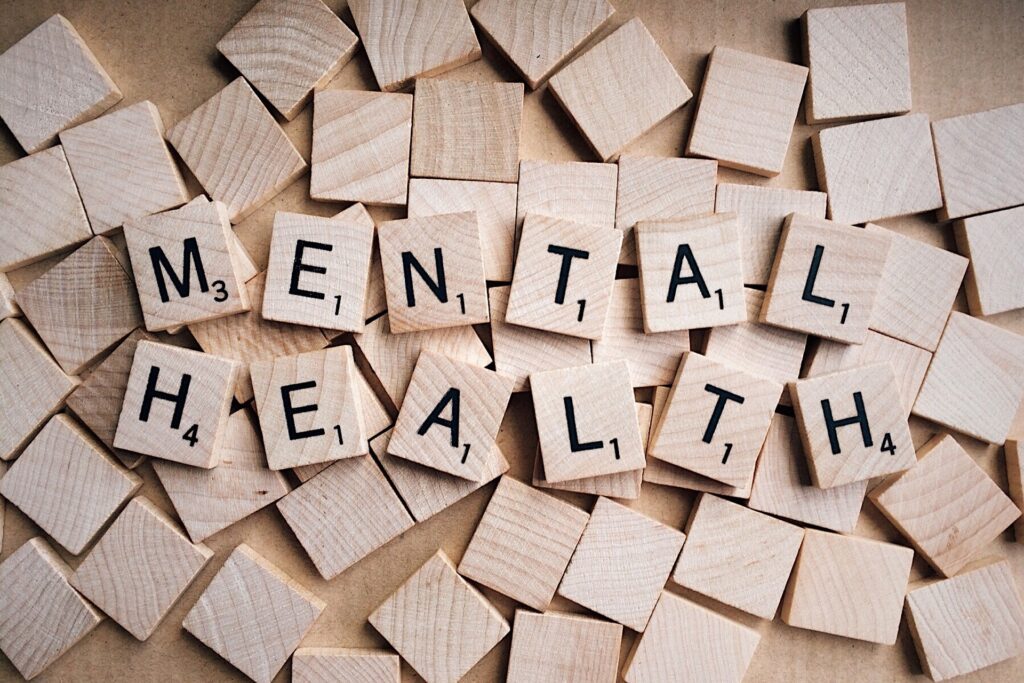
We often don’t realize how big of a role we may individually play when it comes to preventing suicide. Being aware of risk factors and signals that most often predict suicide and knowing who is most likely to commit suicide puts us in the position to help save lives.
Suicide in the United States 2016
As of 2016, 44,965 Americans died by suicide. That means one person about every 12 minutes had taken his or her own life. This number is 2.3 times the number of homicides in 2016. In addition, since 2009 suicides have exceeded the number of motor vehicle crash related deaths
Suicide is the tenth leading cause of death across any lifespan. It is also the second leading cause of death for 15–24-year olds.
Defining the Issue
Suicide is not exclusive. Anybody from any ethnic or cultural background, creed, age, education level, and sexuality are susceptible to suicide.
Attempted suicide is defined as an act of self injury with at least some intent to die as a result of the act.
Usually, these attempts are a way for someone to avoid confronting their problems of intense emotional pain when they do not know how to healthily deal with it.
Risk Factors
Risk factors are events or situations that may increase the likelihood of a suicide attempt or death. These risk factors may help identify those who are most at risk to attempt suicide.

Who is the most at Risk
Men, especially those who work in hazardous environments, make up 77% of successful suicides. Men are at risk, in part, due to cultural constrains that discourage men from talking about suicidal thoughts.
Women have the most attempted suicides. Women tend not to choose highly lethal ways to make an attempt on their own lives.
LGBTQ youth and young adults are also a higher risk, experiencing rejection, depression, and bullying.
Warning signs
The best way to be of help is to look for the warning signs in connection with risk factors. These observable signs may indicate increased risk of suicide for someone who may be close to you. These signs may be noticeable within hours or days leading up to suicide and, if caught in time and addressed, can help stop someone from trying to take his or her own life.
There are some direct verbal ques that you should pay attention to such as:
- I wish I was dead
- I’m going to end it all
- I’m going to kill myself
Take phrases and wording like this seriously. These may indicate a person trying to call out for help.
Another way to be aware and remember warnings signs is to use the mnemonic phrase: IS PATH WARM:
I Ideation: Has the person threated or communicated thoughts or feelings that allude to suicide?
S Substance abuse: Does the person excessively use drugs or alcohol or has drug or alcohol use increased?
P Purposelessness: Does the person talk about or act like there is no reasons to live?
A Anxiety: Does the person act agitated or struggle with insomnia?
T Trapped: Does the person feel that there is no way out of current circumstances?
H Hopelessness: Does the person talk about how nothing will ever change?
W Withdrawal: Has the person withdrawn from friends, family, and society?
A Anger: Does the person show signs of uncontrollable anger, rage, or maybe even seeking revenge for something?
R Recklessness: Does the person take unnecessary or thoughtless risks?
M Mood: Has the person experienced dramatic changes in mood?
Common Misconceptions about Suicide
It is a common misconception that talking about suicide will make someone more likely to do it. As long as you are not encouraging a person to commit suicide, it is helpful to someone who has thought of suicide to talk about it.
Talking about suicide will make it easier for some to reach out for help knowing you can be a safe place for them to share what they are going through.
When talking about suicide, avoid phrases such as ‘failed attempt’ or ‘successful suicide’ as they present the wrong message, equating living as a failure and dying as a
success.
How Can You Help Prevent Suicide?
Here are steps you can take to help prevent suicide:
1) Show You Care—Listen carefully—Be genuine
2) Ask the Question—Be direct, caring, and non-confrontational
3) Get Help—Do not leave him/her alone

Suicide prevention in the Workplace
To help prevent suicide in the workplace, create an environment where employees feel connected and accepted and can communicate without feeling judged.
Be aware of employees who may be at risk and, when necessary, help get them the assistance that they need.
Who to contact
If there is someone who is trying to commit suicide and possesses the means to do so immediately contact 911.
If someone who has mentioned suicide or shows other signs that may lead to attempting suicide, call the suicide hotline for your area and get further help from them.
How Insure Compliance Can Help
Insure Compliance can help foster a healthy uplifting environment for the workplace by providing complete trainings on Suicide Prevention and Awareness.
Key Takeaways
There are many warning signs of suicide, and it is up to all of us to identify and intervene when appropriate. This is a way to help save lives.
It’s important to keep an open mind about what causes somebody pain and what you can do to help them with that pain.
If you want more information on suicide prevention, contact Insure Compliance. We can offer company-wide trainings to help you stay informed and aware.
Disclaimer: Note that every effort has been made to ensure that the information provided in this guide is accurate. However, this information is intended as a guide only, providing an overview of general available information. This guide is not intended to be an exhaustive source of information and should not be seen to constitute legal, safety or business advice. You should, where necessary, seek your own advice from safety or legal professionals for advice and counseling according to your specific needs.







